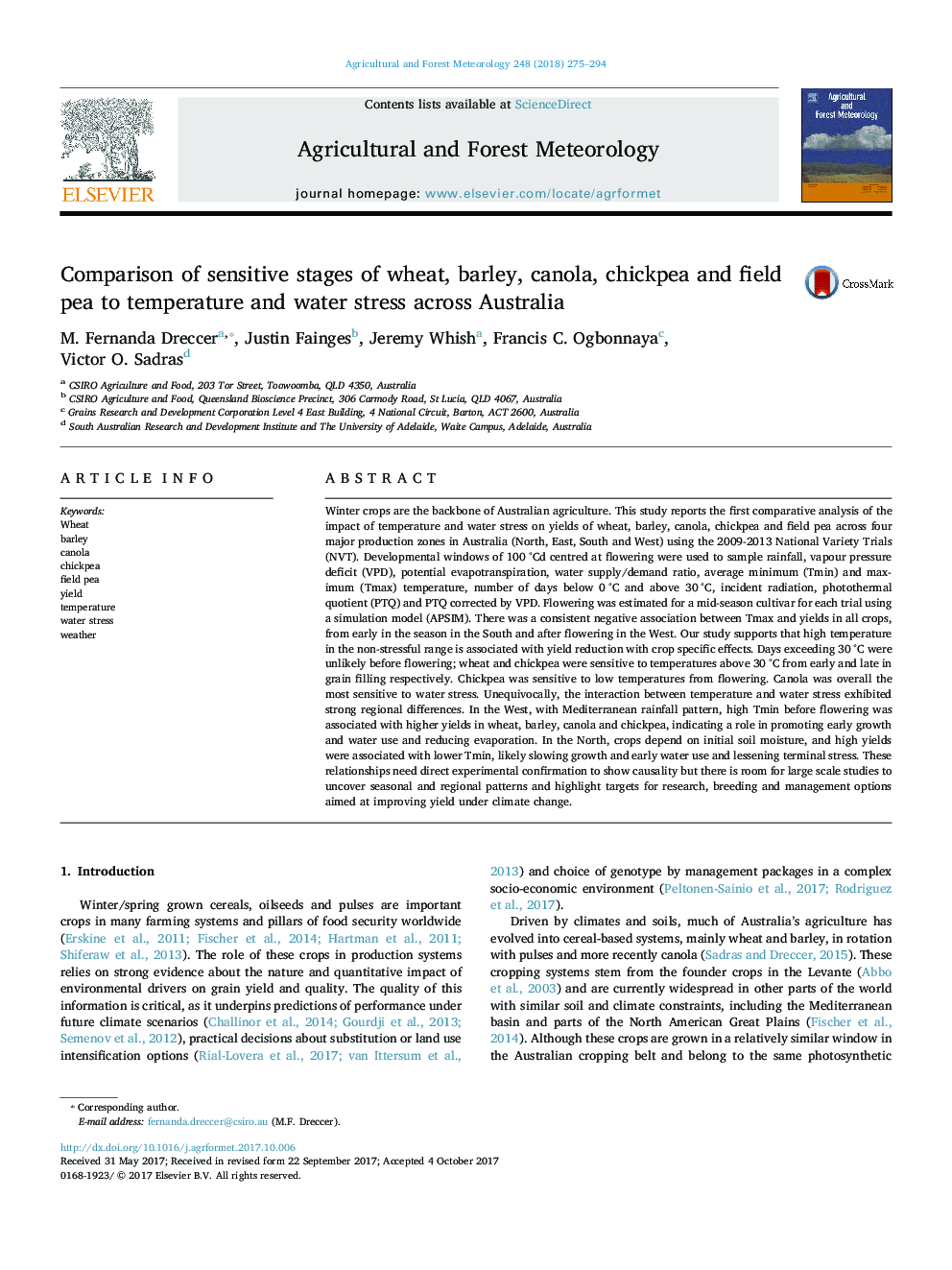| کد مقاله | کد نشریه | سال انتشار | مقاله انگلیسی | نسخه تمام متن |
|---|---|---|---|---|
| 4758882 | 1420853 | 2018 | 20 صفحه PDF | دانلود رایگان |
- Analysis of Australian National Variety Trials demonstrates impact of climate on five crops.
- Higher maximum temperature in the non-stressful range was associated with lower yields.
- The interaction between temperature and water stress had a regional pattern.
- Effects were crop and stage specific.
- Large scale trials analysis can focus breeding and management research initiatives
Winter crops are the backbone of Australian agriculture. This study reports the first comparative analysis of the impact of temperature and water stress on yields of wheat, barley, canola, chickpea and field pea across four major production zones in Australia (North, East, South and West) using the 2009-2013 National Variety Trials (NVT). Developmental windows of 100 °Cd centred at flowering were used to sample rainfall, vapour pressure deficit (VPD), potential evapotranspiration, water supply/demand ratio, average minimum (Tmin) and maximum (Tmax) temperature, number of days below 0 °C and above 30 °C, incident radiation, photothermal quotient (PTQ) and PTQ corrected by VPD. Flowering was estimated for a mid-season cultivar for each trial using a simulation model (APSIM). There was a consistent negative association between Tmax and yields in all crops, from early in the season in the South and after flowering in the West. Our study supports that high temperature in the non-stressful range is associated with yield reduction with crop specific effects. Days exceeding 30 °C were unlikely before flowering; wheat and chickpea were sensitive to temperatures above 30 °C from early and late in grain filling respectively. Chickpea was sensitive to low temperatures from flowering. Canola was overall the most sensitive to water stress. Unequivocally, the interaction between temperature and water stress exhibited strong regional differences. In the West, with Mediterranean rainfall pattern, high Tmin before flowering was associated with higher yields in wheat, barley, canola and chickpea, indicating a role in promoting early growth and water use and reducing evaporation. In the North, crops depend on initial soil moisture, and high yields were associated with lower Tmin, likely slowing growth and early water use and lessening terminal stress. These relationships need direct experimental confirmation to show causality but there is room for large scale studies to uncover seasonal and regional patterns and highlight targets for research, breeding and management options aimed at improving yield under climate change.
Journal: Agricultural and Forest Meteorology - Volume 248, 15 January 2018, Pages 275-294
